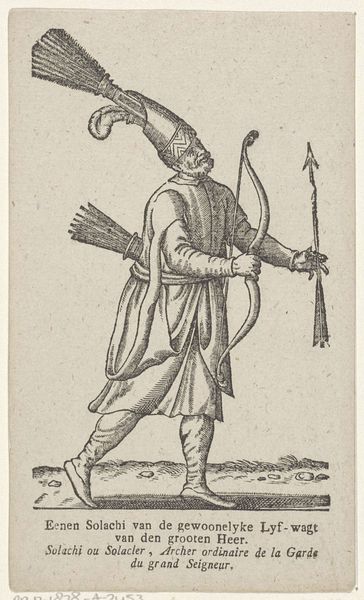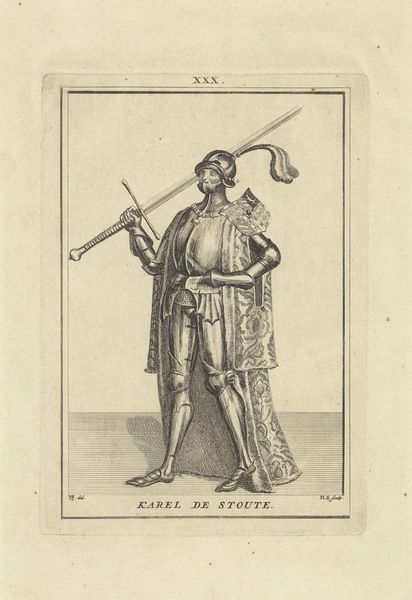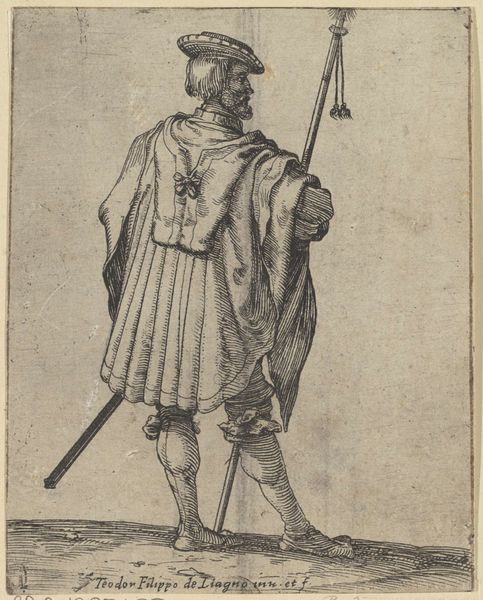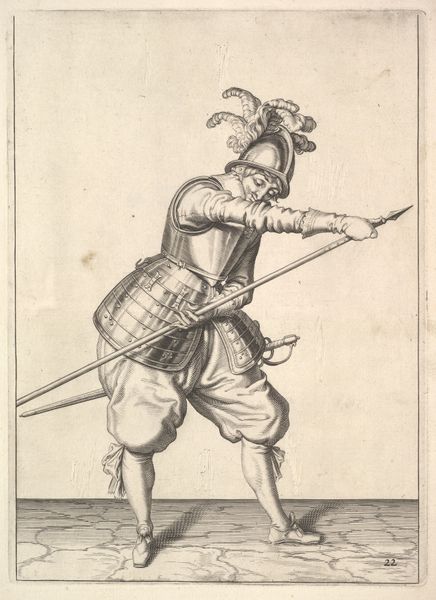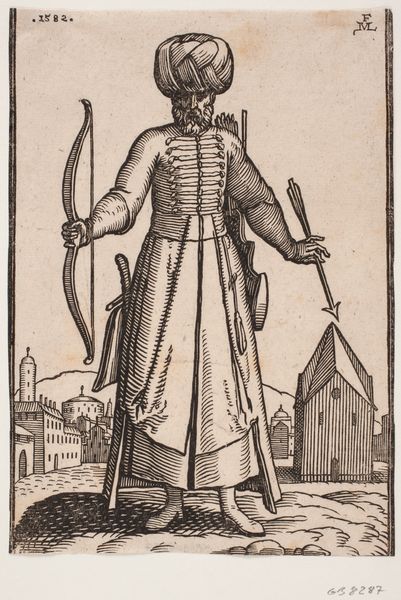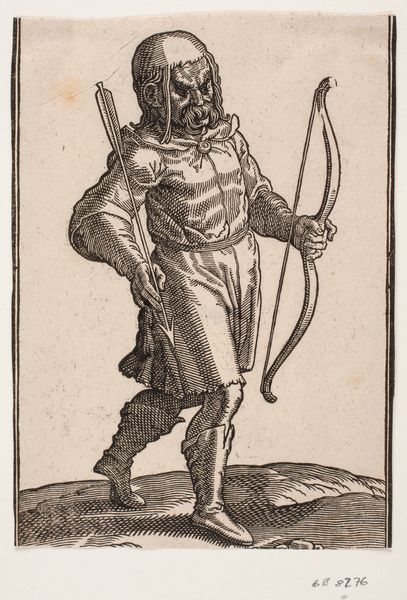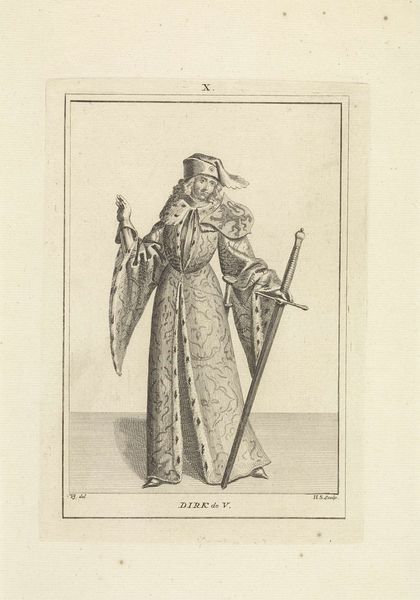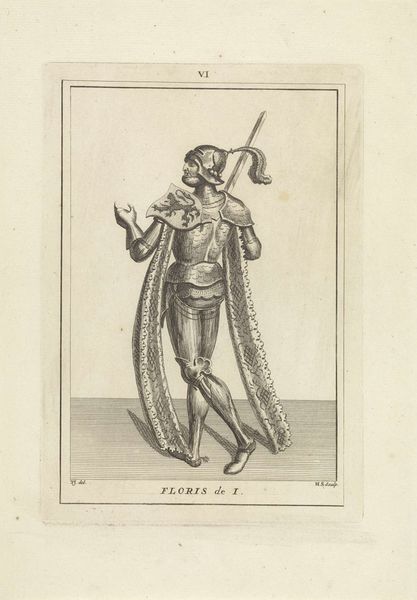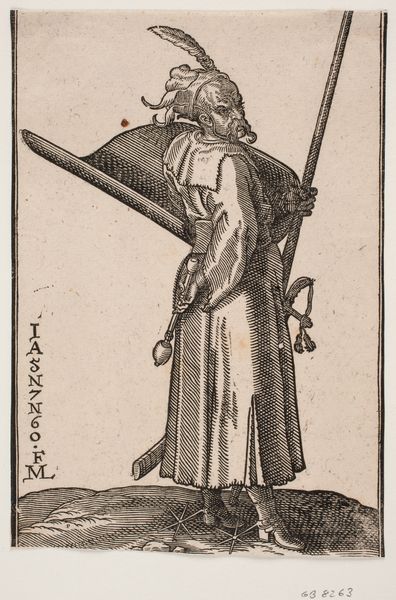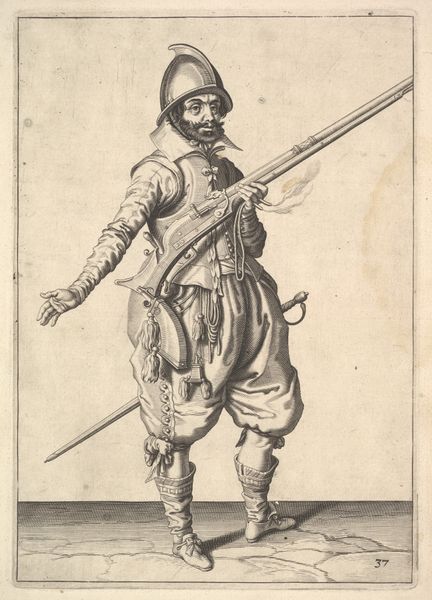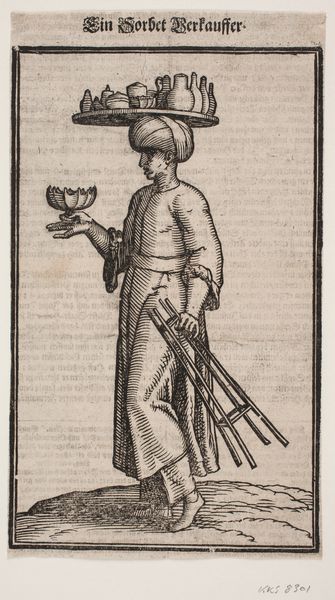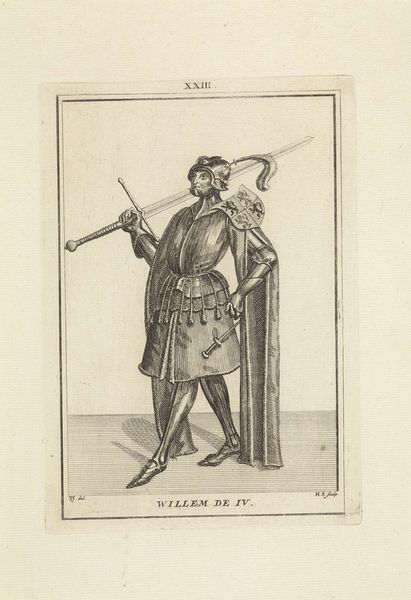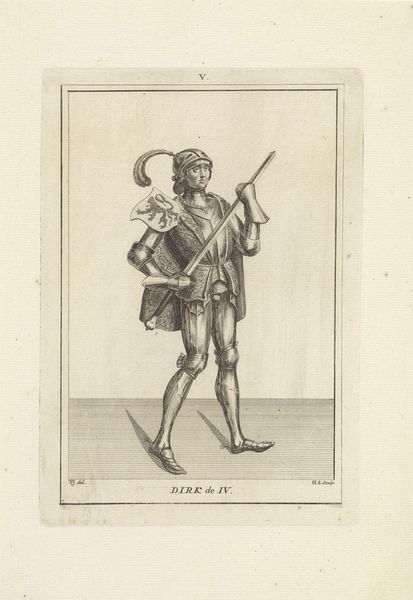
Stående bueskytte, set bagfra; i v. hånd en bue, i h. hånd en pil 1576
0:00
0:00
drawing, print, ink, woodcut, engraving
#
drawing
# print
#
ink
#
woodcut
#
engraving
Dimensions: 196 mm (height) x 138 mm (width) (bladmaal)
Curator: Looking at this image, I immediately feel a sense of quiet tension. It's as if the archer is poised, ready, but also somehow withdrawn. What do you think? Editor: That's interesting. Let me orient our listeners: what we're looking at is a print by Melchior Lorck entitled 'Standing Archer, Seen From the Back, With Bow in Left Hand and Arrow in Right Hand'. It dates to 1576, created through a combination of engraving, woodcut and ink, I believe. He's captured a figure that definitely departs from European archetypes. For me, that arched bow tells a story about vulnerability, but strength too, if you follow its pull back from an outside perspective. Curator: Indeed, the cultural significance of an archer extends far beyond mere hunting or warfare. Historically, the archer is a loaded symbol. He often represents skill, focus, discipline, but is also entangled in colonial contexts where that bow and arrow become tools of power and oppression. It's imperative we remember that Europeans encountering these images and people were not seeing neutral depictions, but representations interwoven with complex colonial narratives. Editor: Absolutely. And you see echoes of those power dynamics rippling out from the central figure of this image. The turban he wears is more than mere headgear, it announces the existence of a distinct identity in ways early European viewers would recognise instantly. His attire reads as exoticized "otherness". And this pose—back towards the viewer—only accentuates that distance. Lorck deliberately withholds his subject's gaze, withholding intimacy, while showcasing his posture and weaponry. It becomes almost ethnographic in intent. Curator: I would argue it _is_ ethnographic in its impulse, which raises significant ethical questions regarding representation and power. It is so very rare, too, to find non-Western persons depicted in early Modern prints without heavy allegorical baggage. This one stands out, though with crucial asterisks and needed qualifications! Editor: All noted! It reminds me too, that even this “simple” engraving preserves complex strands of cultural memory. By showcasing the materials, attire and archery as symbols we continue a process that both preserves a certain perspective and reminds us to reckon critically with its origins. Curator: Indeed, it serves as a crucial point for discussing the intertwined threads of identity, representation, and historical power dynamics—something art history cannot shy away from. Thanks for sharing those insights, it truly adds necessary layers! Editor: My pleasure.
Comments
No comments
Be the first to comment and join the conversation on the ultimate creative platform.

